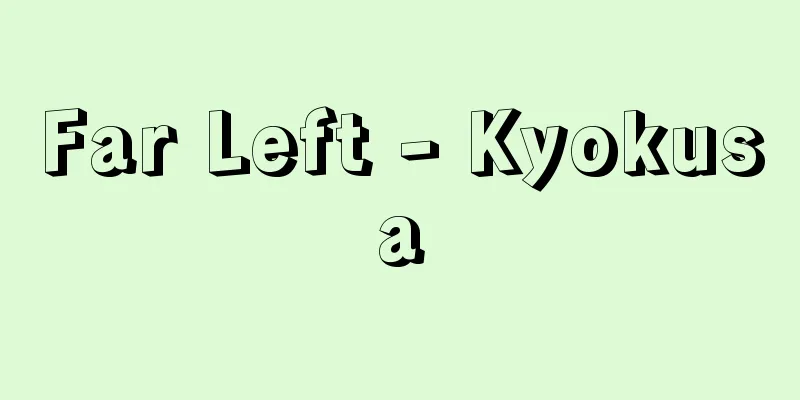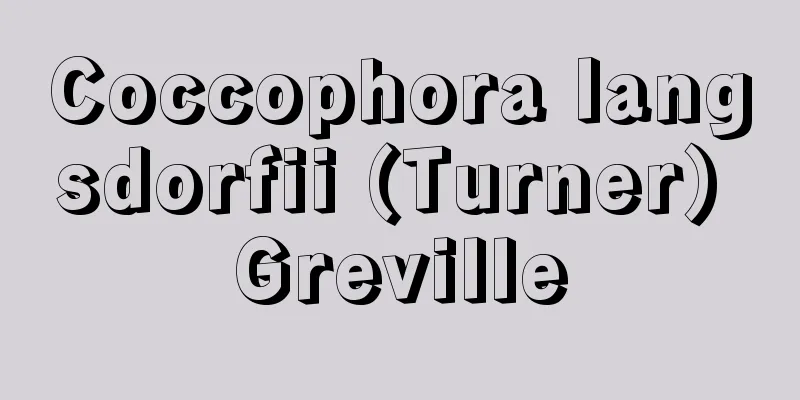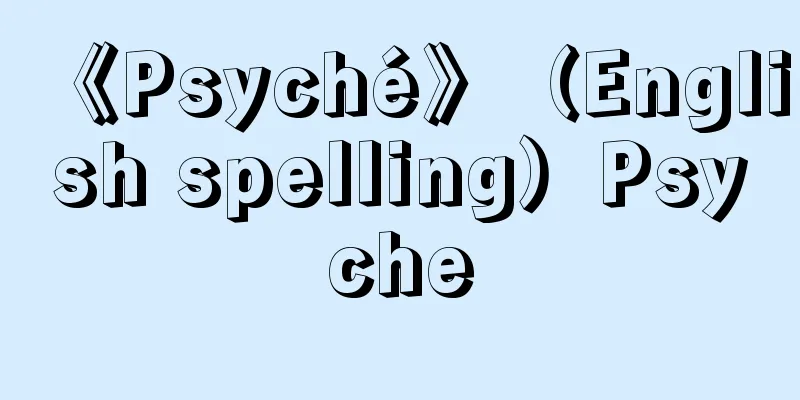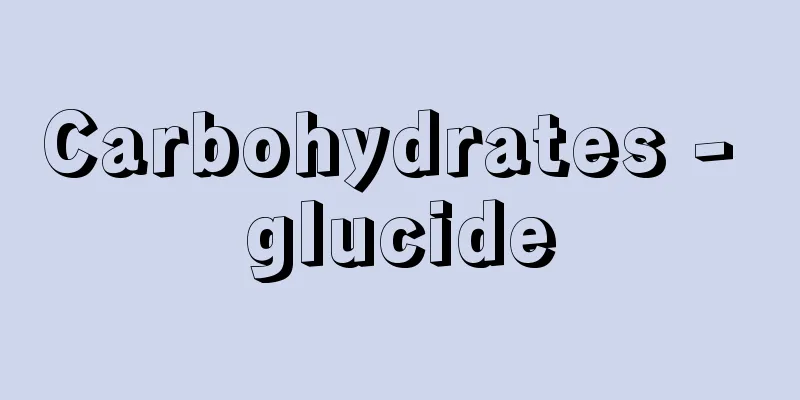Cerebrum - dainou (English spelling)
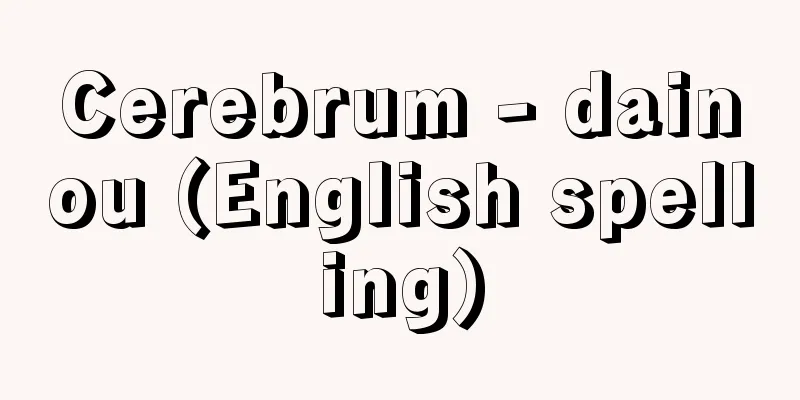
OverviewDuring the process of individual development in vertebrates, a constriction occurs at the anterior end of the neural tube, which divides into five parts. The most distal part is called the telencephalon, but in higher vertebrates such as mammals, it is particularly well developed and is therefore also called the cerebrum. The cerebrum is broadly divided into the outer cortex (mantle) and the inner basal ganglia. As we evolve from fish to mammals, the telencephalon gradually develops and its structure becomes more complex. In fish and amphibians, the telencephalon is sometimes called the cerebrum, but strictly speaking, it is not large enough to be called a cerebrum. The telencephalon of these animals is closely related to the sense of smell, and in fish, it is a tubular structure that continues to the olfactory bulb and consists only of the paleocortex. In amphibians, the paleocortex differentiates on the dorsal side of the paleocortex and the basal ganglia on the ventral side. In reptiles, the neocortex differentiates between the paleocortex and the paleocortex at the anterior end of the telencephalon, and as these cortices develop, the basal ganglia are enclosed inward. In mammals, the neocortex develops well, pushing aside the paleocortex and paleocortex and covering most of the brain. This is how it takes on a form that can be called a typical cerebrum. The pushed-aside paleocortex becomes the hippocampus, and the paleocortex becomes the piriform lobe (olfactory lobe). In this way, during the evolution of the cerebrum, new parts are constantly differentiating and developing, gradually forming an increasingly complex, layered structure. Along with the evolution of structure, the cerebrum acquires new functions. The paleocortex is simply the center for olfaction, but as it differentiates, it becomes the center for instincts and autonomic functions. In mammals, the neocortex develops and controls the lower centers, becoming the center for sensation and movement (the law of cephalad shift of neural functions). In humans, the neocortex is highly developed, and has acquired advanced intelligence and integration functions. On the other hand, with evolution, the basal ganglia also split into the old corpus striatum and the suprastriatum, and in reptiles, the old corpus striatum and the neostriatum differentiate and are added to this. In mammals, the old corpus striatum becomes the globus pallidus, the old corpus striatum becomes the amygdala, and the neostriatum becomes the caudate nucleus and putamen. The function of the basal ganglia is to control the controlled movements of the body. [Masaru Wada] Human cerebrumThe cerebrum is a spherical structure that occupies most of the skull cavity. During fetal development, the long, slender neural tube (central nervous system) swells at its tip to form the telencephalon, which then swells further to form a hemisphere to become the cerebrum. The completed cerebrum is divided into the left and right cerebral hemispheres (telencephalon) by a deep groove called the longitudinal fissure that runs from front to back through the center, and at the base of this fissure, a large number of bundles of nerve fibers called the corpus callosum runs like a plate connecting the left and right cerebral hemispheres. The corpus callosum forms the roof of the third ventricle and the left and right lateral ventricles. The center of the cerebrum transitions to the diencephalon that surrounds the third ventricle, and the diencephalon continues to the brain stem below the midbrain (which is divided downward into the midbrain, pons, and medulla oblongata). The brainstem contains the pathways for sensory nerves ascending to the cerebral hemispheres and motor nerves descending from the cerebral hemispheres, as well as their relay nuclei. The cerebral hemispheres are structured as follows: mantle, cerebral nuclei, and lateral ventricles. The mantle is made up of the cerebral cortex, which covers the surface of the cerebral hemispheres, and the cerebral white matter (medulla) that occupies its interior. The cerebral nuclei are groups of nerve cells present in the deep white matter of the cerebrum. On the surface of the cerebral hemispheres, there are complex grooves of various lengths. The depth of the grooves varies from shallow to deep. These are called the cerebral sulci, and the protuberances between the grooves are called cerebral gyri (the parts that are called the creases of the brain). The cerebral sulci and the associated gyri are related to the central parts of the cerebral hemispheres, but their shapes vary greatly from person to person. The deep groove that runs from anterior-inferior to posterior-upper in the almost center of the outer surface of the cerebral hemispheres is called the "lateral sulcus (sylvian sulcus)". The cerebral cortex below the lateral sulcus becomes the temporal lobe. The anterior-superior part of the lateral sulcus becomes the frontal lobe, and the posterior-superior part becomes the parietal lobe. The groove that runs from almost the center of the upper edge of the outer hemisphere to anterior-inferior in the outer surface and ends near the lateral sulcus is called the "central sulcus", which is the boundary between the frontal lobe and the parietal lobe. The posterior part of the parietal lobe and the temporal lobe becomes the occipital lobe. Attached to the underside of the left and right frontal lobes are baseball bat-shaped structures with their tips facing forward; these are called the olfactory lobes. The olfactory lobes are part of the rhinencephalon and correspond to the tip of the rhinencephalon, but in humans these parts are only vestigial. When the cerebral hemispheres are cut longitudinally (midsagittal section) along the longitudinal fissure, the "U"-shaped corpus callosum can be seen on the medial surface of the cerebral hemisphere, corresponding to the bottom of the longitudinal fissure. The corpus callosum is the most well-developed part of the human brain. [Kazuyo Shimai] Structure of the cerebral cortexThe cerebral cortex is a gray matter composed mainly of neurons, and the average thickness of the entire cerebral cortex is said to be 2.5 mm (4 mm for the precentral gyrus (the part in front of the central sulcus) of the frontal lobe, and 1.5 mm for the visual cortex (Brodmann's area 17) of the occipital lobe). The total number of neurons in the cerebral cortex is said to be 14 billion, and they form parallel layers on the surface of the cerebrum, with complex functional connections between them. The neuronal layers of this cerebral cortex basically show a six-layer structure, but during cortical development, there are cortical layers that always show the process of six-layer formation at some point, and layers that do not show six-layer formation at any time. The former are called isocortex, and the latter are called anisocortex. The isocortex corresponds to the neocortex, which is the newest part in terms of phylogenetic development, and the anisocortex is further divided into the oldest old cortex (protocortex) and the slightly newer paleocortex. Most of the cortex of the cerebral hemisphere belongs to the neocortex, while the paleocortex and archacortex include the hippocampus, dentate gyrus, septum, olfactory lobe, parahippocampal gyrus, and amygdala (body) that are buried on the bottom or inside of the cerebral hemisphere. The neocortex is more developed in higher animals, and is particularly well developed in humans. The system that has the neocortex as its integrating center is called the "neocortical system." The paleocortex and archacortex are also called the limbic cortex, and the system that has the limbic cortex as its integrating center is called the "limbic system." German neurologist K. Brodmann (1868-1918) divided the cerebral cortex into 52 cortical areas based on the differences in the layer structure of each part of the cerebral cortex, and assigned a series of numbers to each area to create a brain map (1908). Even today, Brodmann's brain map is generally used to indicate the parts of the cerebral cortex. [Kazuyo Shimai] Functional center of the cerebral cortexThe cerebral cortex is the highest integrating center of the nervous system, and contains centers with various functions. Today, the locations of the functional centers of the cerebral cortex that are generally recognized are as follows: (1) Cortical motor center The neural pathways that control voluntary skeletal muscle movements, i.e., the pyramidal tract (corticospinal tract), begin in the precentral gyrus anterior to the central sulcus of the left and right cerebral hemispheres, as well as in the cortex of the anterior part of the paracentral lobule and other parts of the cortex. In addition, the neural pathways that control unconscious skeletal muscle movements and tension, i.e., the extrapyramidal tracts, begin in the entire cerebral cortex. (2) Cortical sensory center Also called the somatosensory area, this is the center for skin sensation (superficial sensation) such as touch, temperature, pain, and muscle sensation (deep sensation), and is distributed in the postcentral gyrus (the part behind the central sulcus) behind the central sulcus, as well as part of the cortex behind it, and the paracentral lobule. (3) Cortical auditory center: Located in the transverse temporal gyrus in the upper part of the temporal lobe. (4) Cortical visual center: Located on the medial surface of the cerebral hemisphere, in the cortex surrounding the calcarine sulcus of the occipital lobe. (5) Cortical olfactory center Although the exact location has not yet been elucidated, the stimulation pathway of the olfactory nerve leads to the anterior part of the parahippocampal gyrus in the medial temporal cortex, and this area is thought to be the center. (6) Cortical taste center This center has also not been fully elucidated, but it is thought to be located around the fused area of the lower ends of the precentral and postcentral gyri. (7) Language Center Although various questions are still raised about this center, a distinction is generally made between the motor language center and the sensory language center. The motor language center is also called the Broca center or Broca's area (named after the French anatomist and anthropologist Broca), and is distributed in the posterior part of the inferior frontal gyrus in the lower frontal lobe. Damage to this area results in the inability to speak, and so-called motor aphasia. On the other hand, the sensory language center is divided into the auditory language center and the visual language center. The former is an area that helps understand the content of words, and is said to be located in the posterior third of the superior temporal gyrus in the upper part of the temporal lobe and adjacent to the supramarginal gyrus. Damage to this area causes sensory aphasia (word deafness). The latter is distributed in the angular gyrus of the inferior parietal lobule, and damage to this area causes alexia (word blindness), in which the person cannot understand the meaning of letters even when they see them. However, it is believed that these language disorders require not just localized damage to the language center, but also the involvement of higher centers. In addition, the cerebral cortex is thought to contain an association center that integrates the connections between the centers, and in humans, it is characterized by its remarkable development. The human neocortex processes information sent from the sensory nerves, commands movement, and is also involved in higher mental activities such as thinking, creativity, intention, and emotion, and the seat (center) of these minds is distributed in the frontal lobe association center. [Kazuyo Shimai] Structure of cerebral white matterThe cerebral white matter (medulla) is the part where nerve fibers that connect the cerebrum to the lower centers or the spinal cord, and nerve fibers that connect the cerebral cortex run, and inside this medulla there are groups of nerve cells called cerebral nuclei. There are four groups of nerve cells, namely the caudate nucleus, the lentiform nucleus, the claustrum, and the amygdala. The lentiform nucleus is further divided into the putamen and the globus pallidus. The caudate nucleus and the putamen are collectively called the striatum. The striatum and the globus pallidus belong to the extrapyramidal system, and unconsciously regulate the movement and tone of skeletal muscles. Disorders in this communication pathway are of great clinical significance (such as Parkinson's disease). Although there are still some unknown aspects of the function of the amygdala, it has long been thought to be involved in various reflex systems related to the sense of smell. In recent years, it has also been considered important as a nucleus belonging to the limbic system, as will be described later. Inside the lenticular nucleus is a part of the medulla called the internal capsule, through which most of the nerve fibers entering and exiting the cerebral cortex pass. The internal capsule is considered to be a common site for intracerebral hemorrhage, and is therefore of clinical importance. The limbic system, which corresponds to the neocortical system, is originally a functional concept, but structurally it is a part that has differentiated in relation to the sense of smell, and is part of the olfactory brain in a broad sense (the area around the olfactory system, including the olfactory system) that surrounds the lateral and third ventricles. Each cerebral hemisphere has a lateral ventricle inside, but the lateral ventricle is a large bulge at the tip of the neural tube, and as the frontal, parietal, temporal, and occipital lobes of the cerebral hemispheres developed, it took on a complex shape. The left and right lateral ventricles are connected to the third ventricle by their respective interventricular foramina. Unlike other organs, the blood vessels that control the brain are not necessarily accompanied by arteries or veins, even if they are large. The cerebrum is controlled by the internal carotid artery and the basilar artery, which is formed by the merging of the left and right vertebral arteries. The cerebral veins also ultimately flow into the dural venous sinuses that run along the surface of the cerebrum. [Kazuyo Shimai] Mechanisms of the neocortical systemThe cerebral cortex is the part that integrates information sent from the sensory nerves and sends out commands for movement and secretion via the motor nerves, and is divided into the neocortical system and the limbic system. In the neocortical system, its functional localization is clear. When the motor and sensory cortices of various animals and humans are examined, primary and secondary areas are distinguished. In the sensory cortex, the primary area is where afferent fibers project directly from the sensory receptors via the relay nuclei of the thalamus, while the secondary area is where fibers are indirectly received from the primary area. In the primary area, sensations such as hearing a sound or seeing a light occur, while in the secondary area, perceptions such as a dog barking or a person talking occur. The motor cortex is adjacent to the anterior part of the cutaneous sensory area and is localized in almost the same structure as the cutaneous sensory area. The secondary motor area is not so clear, but stimulating it produces behaviors that are meaningful to the organism, such as yawning, vocalization, and coordinated movement of the head and eyes. In lower animals, the neocortex is mostly taken up by the motor and sensory areas, but in higher animals, other areas begin to develop. This area is called the association area, and is where more advanced integrative functions than the secondary sensory and motor areas are carried out, such as cognition, judgment, memory, and will. This association area is the most well-developed in humans. In terms of function, the neocortical system can be divided into three major areas: the sensory area, which directly receives projections from various senses; the motor area, which directly issues commands for movement; and the association area, which has connections with the cerebral cortex and performs complex functions. Morphologically, the neocortex is divided into the frontal lobe, parietal lobe, temporal lobe, and occipital lobe by large sulci. From a physiological perspective, roughly speaking, the area in front of the central sulcus has motor functions, and the area behind it has sensory functions. The functions of the four areas are explained below. [Torii Shizuo] Frontal lobeIt is the most developed in humans. Areas 4, 6, and 8 are responsible for integrating movement. Area 4 is the primary motor area, which issues direct motor commands. It is divided into fine sections according to the movements of each part of the body, and occupies a wide area. The descending fibers from each area are bundled together to form pyramidal tracts, which transmit motor commands to each muscle on the opposite side. Area 6 is called the premotor area, and when this area is damaged in humans, skilled movements are affected. For example, changes in handwriting and slower typing speed are observed. This area is responsible for activating several muscles in a purposeful manner. Area 8 is called the frontal eye field, and is related to voluntary eye movements. Areas 9, 10, and 11 of the prefrontal area, and areas 12, 13, and 14 of the orbital area are representative of the so-called association areas. The mind, emotions, personality, and other aspects such as thinking, reasoning, and will are associated here. A prominent mental symptom of frontal lobe damage is a lack of motivation. Emotions become sluggish, indifferent, and unresponsive to things. For example, even though consciousness is not impaired, a person may leave food in their mouth and not chew it, or stare blankly with one arm through their kimono. This lack of motivation is caused mainly by damage to areas 9 and 10 of the frontal lobe. Another symptom caused by frontal lobe damage is a change in personality. This is the appearance of a childish, shallow, and sloppy personality. A careless, easygoing personality and optimism become prominent. In addition, reflection and consideration for oneself and others are lost, self-centered behavior becomes prominent, and the person loses connection with the past and future, loses planning, and begins to live only in the moment. These personality changes are seen in frontal lobe damage, especially areas 11 and 12. The frontal lobe has long been considered to be closely related to intelligence, but even if it is affected, old memories are not significantly affected. In other words, intelligence that has already been learned and memorized is not significantly affected, but there is an impairment in the ability to adapt to new stimuli. Frontal lobe leukotomy (lobotomy) was once widely used to treat mental illness, but it is no longer used these days because, although it relieves anxiety and restlessness, it is prone to cause changes in motivation and personality. In humans, areas 44 and 45 (association areas) are located in the lower front of the motor cortex of the left hemisphere, which is related to speech production, such as the tongue, mouth, and vocal cords. This is the motor language center (Broca's area) involved in speech movements. If this area is damaged, the patient can understand what people are saying and can organize what they are trying to say in their head, but they are unable to form it into words (motor aphasia). [Torii Shizuo] Parietal lobeAreas 3, 1, and 2 in the postcentral gyrus are the primary somatosensory areas, and sensations from the skin, muscles, joints, etc. on the opposite side are projected to these areas via the thalamus on the same side. The limbs are located above and the head is located below within the sensory areas. In addition, highly developed parts in humans, such as the hands, fingers, and mouth, occupy a large area. Areas 5 and 7 are association areas related to somatosensory recognition. Damage to these areas results in the inability to recognize the opposite half of one's body as one's own (somatognosia), and also impairs spatial recognition of the opposite side. For example, if a person with damage to the right parietal lobe is asked to draw a picture, the drawing will be very crude and they will only be able to draw the right half. [Torii Shizuo] Temporal lobeArea 43 is located near the parts related to the tongue and mouth, which are somatic senses, and is a taste area. Taste perception is carried out in an area nearby called the isthmus (association area). Areas 41 and 42 are primary auditory areas, which receive sound stimuli transmitted from the ear via the medial geniculate body (a relay nucleus of the thalamus). When this area is stimulated in humans, it is said that sounds such as buzzing or clicking are felt. In general, fibers transmitting high-pitched sounds are projected to the front part of the auditory area, and low-pitched sounds are projected to the back part. Unlike the primary visual area, the primary auditory area is bilaterally controlled, so destruction of one side hardly causes any hearing impairment. Area 22 is a secondary auditory area. Association areas around the auditory area of the left hemisphere, such as areas 22, 39, and 40, are the sensory language center (area 22 is called Wernicke's area), and are the part that understands language. If this area is damaged, the patient can speak spontaneously, but cannot understand what others say, even if they can hear it as a sound, as they would if they were listening to a foreign language. In particular, areas 39 (angular gyrus) and 40 (supramarginal gyrus) receive all information from the auditory, visual, and somatosensory areas, and damage to these areas can cause symptoms such as aphasia, dyslexia, and agraphia. However, this area does not have a reading or writing center, but rather several association areas work together to enable reading and writing. For example, when looking at written words and reading them, the pathway that works is primary visual cortex → angular gyrus → Wernicke's area → arcuate fasciculus → Broca's area → motor cortex, while when speaking words that have been heard, the pathway that works is thought to work is auditory cortex → Wernicke's area → arcuate fasciculus → Broca's area → motor cortex. The angular gyrus associates different senses, such as vision, hearing, and somatosensation, and this mechanism is the basis of language activity. The angular gyrus is very well developed in humans but is underdeveloped in subhuman primates, and this difference in the development of the angular gyrus is the difference between the language ability of humans and animals. It is believed that the language-related center is located in the left cerebral hemisphere, and this is supported by anatomical evidence. If you cut the human cerebrum along the lateral sulcus, you will find that the part on the left side that corresponds to the language center is highly developed. In non-linguistic animals such as monkeys and below, no such difference between the left and right cerebral hemispheres is observed. Furthermore, important physiological findings have been obtained from patients who have undergone corpus callosum section surgery. When the corpus callosum is cut, the right half of the visual field is projected to the left hemisphere's visual cortex, and the left half is projected to the right hemisphere's visual cortex, but there is no connection between the left and right visual cortex. R.W. Sperry and others from the United States conducted research on the language center using the following experiment. When a patient whose corpus callosum had been cut was shown an object or a letter only in the right visual field, he was able to name the object or read the letter. However, when the object or letter was shown only in the left visual field, he was unable to name it or read the letter. However, if the character "KEY" is shown in the left visual field, the subject can find the key with his left hand, but cannot describe in words what he has grasped with his left hand. This shows that the left hemisphere of the human brain is capable of understanding, recognizing, and expressing language, but the right hemisphere is unable to express language. The temporal lobe is closely related to memory. The area connecting areas 42 and 38 just below the lateral sulcus is where past memories are reproduced in an orderly manner by electrical stimulation. However, since a different memory appears when the stimulation area is shifted slightly, this area is considered to be the area that triggers memory retrieval rather than the center of memory. In other words, the temporal lobe plays an important role in retrieving past memories, matching them appropriately, interpreting current experiences, and taking appropriate action according to the situation. For this reason, the American brain surgeon WG Penfield (1891-1976) called the temporal lobe the "interpreting cortex." [Torii Shizuo] Occipital lobeThere is a center for vision. Area 17 is the primary visual area, where light stimuli from the retina pass through the optic nerve and the lateral geniculate body (a relay nucleus of the thalamus) and are sensed as light. Area 18 is the secondary visual area, which can recognize things such as a "rose flower" or a "butterfly" by comparing them with memories of past experiences. Area 19 is called the tertiary visual area, and is responsible for creating even more complex visual images. These areas are visual association areas, and damage to them can cause various visual agnosias. For example, you may see a light but not know what color it is, or you may know it is a person's face but not know who it is. Damage to these areas also makes visual recall impossible, which is why people stop dreaming. [Torii Shizuo] Mechanisms of the limbic systemThe limbic system is located on the inner surface of the brain, surrounding the ventricles, and is mostly covered by the cerebral cortex (neocortex). Olfactory fibers are concentrated around the hippocampus-amygdala, which is the center of this system, so it has been called the olfactory brain. Recently, it has been confirmed that this area plays an important role in emotions and instinctive behavior. When this area is electrically stimulated in animals, behavioral responses of anger and fear are observed, but conversely, when this area is removed, even violent animals become completely docile. Also, when a pedal is placed on an animal that electrically stimulates the septum-hippocampus, the animal continues to press the pedal itself, so this area is thought to be the area that causes the emotion of pleasure. Even in humans, it is said that electrical stimulation of the septum during brain surgery causes pleasure. For these reasons, the limbic system is thought to play a central role in emotions, and is sometimes called the emotional brain. Furthermore, electrical stimulation of the area centered on the amygdala produces a series of oral behaviors such as smelling, licking, biting, and sucking, and stimulation of the hippocampus and other areas enhances sexual function. Stimulating the hippocampus in a cat causes it to exhibit sexual behavior toward dogs and chickens. These emotions and instinctive behaviors are directly controlled by the hypothalamus, but the limbic system regulates the hypothalamus from a higher level. Therefore, when stimulation of the limbic system causes hyperfunction of the hypothalamus, ultimately this causes abnormal functions of the organs under its control through the autonomic nervous system, such as stomach ulcers and high blood pressure. In this sense, the limbic system is also sometimes called the visceral brain. American cerebral physiologist PD MacLean (1913-2007) said that the anterior part of the limbic system, i.e. the amygdala, frontal orbital surface, and pretemporal region, play a major role in instinctive behaviors for individual preservation, such as food intake, attack, and escape, while the posterior part of the limbic system, i.e. the hippocampus, septum, and cingulate gyrus, play a major role in instinctive behaviors for species preservation. Instinctual behaviors are not innate, but are learned as a result of various trial and error. Therefore, in instinctive behaviors, it is necessary to select appropriate behaviors in light of current internal and external information and previous memories, and it can be said that memory in the limbic system plays an important role. In both animals and humans, removal of the area centered on the hippocampus causes memory disorders, especially severe disorders in the formation of new memories. In addition, the exploratory response that occurs when the hippocampus of an animal is stimulated (the reaction of turning the eyes or head in the direction of a new stimulus) is interpreted as a hallucination caused by the evoking of some memory. [Torii Shizuo] "The Brain and the Nervous System" edited by Tokizane Toshihiko (1976, Iwanami Shoten)" ▽ "The Blueprint of the Brain" by Ito Masao (1980, Chuokoron-Shinsha) ▽ "The Brain and Human Behavior: Neurophysiological Anthropology" by Chiba Yasunori (1981, Baifukan) ▽ "The Science of the Brain" vols. 1 and 2 edited by Nakamura Yoshio and Sakata Hideo (1983, Asakura Shoten) ▽ "The Story of the Brain" by Tokizane Toshihiko (Iwanami Shinsho) ▽ "The Brain Handbook: The World of the Brain Unravelled to This Point" by Kubota Akira et al. (Kodansha, Bluebacks) ©Shogakukan "> Parts of the cerebrum ©Shogakukan "> Cerebral morphology and limbic system ©Shogakukan "> Structure of the cerebrum and names of its parts ©Shogakukan "> Brodmann's brain map and classification of the neocortex The diagram shows a schematic of the arrangement of the motor cortex (left) and the cutaneous sensory cortex (right). *By Penfield and Rasmussen ©Shogakukan Functional localization of motor and cutaneous sensory areas In a split-brain with the corpus callosum severed, the optic chiasm is a hemichiasm, so what is in the left visual field goes to the right hemisphere, and what is in the right visual field goes to the left hemisphere. In this case, if the word KEY is shown in the left visual field, the subject can pick up the KEY that is pointed out, but cannot name or explain the KEY . Sperry's experiments on the language center ©Shogakukan "> The evolution of the animal brain ©Shogakukan "> The vertebrate brain Source: Shogakukan Encyclopedia Nipponica About Encyclopedia Nipponica Information | Legend |
概論脊椎(せきつい)動物では個体発生の過程で、神経管の前端にくびれが生じて五つの部分に分かれる。その最先端の部分を終脳とよぶが、哺乳(ほにゅう)類などの高等脊椎動物ではとくによく発達するので大脳ともよぶ。大脳は大きく分けて、外側の皮質(外套(がいとう))と、内側の大脳基底核とからなる。 魚類から哺乳類へと進化するにしたがって終脳はしだいに発達し、その構造も複雑になってゆく。魚類や両生類でも終脳を大脳とよぶことがあるが、厳密には大脳とよべるほど大きくはない。これらの動物の終脳は嗅覚(きゅうかく)と密接な関係があり、魚類では、嗅球に続く管状構造物であり、旧皮質のみからなる。両生類になると、旧皮質の背側に古皮質、腹側に基底核が分化する。爬虫(はちゅう)類では、終脳の前端の旧皮質と古皮質の間に新皮質が分化し、これらの皮質の発達とともに、基底核は内部に包み込まれる。哺乳類では、新皮質がよく発達し、古皮質と旧皮質を押しやり、脳の大部分を覆うようになる。こうして典型的な大脳とよべる形態となる。押しやられた古皮質は海馬(かいば)、旧皮質は梨状葉(りじょうよう)(嗅葉)となる。このように、大脳の進化においては、つねに新しい部分が分化・発達し、しだいに複雑な重層的構造を形づくる。 構造の進化と相まって、大脳は新しい機能を獲得してゆく。旧皮質は単なる嗅覚の中枢であるが、古皮質が分化すると本能や自律機能の中枢となる。哺乳類では新皮質が発達し、下位の中枢を統御するとともに、感覚や運動の中枢となる(神経機能の頭側移動の法則)。ヒトでは新皮質が非常に発達し、高度な知能や統合の機能を獲得している。 一方、進化とともに基底核も旧線条体と上線条体に分かれ、爬虫類ではこれに古線条体と新線条体が分化して加わる。哺乳類では旧線条体は淡蒼球(たんそうきゅう)、古線条体は扁桃核(へんとうかく)、新線条体は尾状核と被殻となる。基底核の機能は身体の統制のとれた運動を支配することである。 [和田 勝] ヒトにおける大脳大脳は球状の構造物で、頭蓋骨腔内(とうがいこつくうない)の大部分を占める。胎生期に発育する細長い神経管(中枢神経系)の先端が大きく膨隆して終脳胞を形成し、この部分がさらに左右に半球状に膨出して大脳となる。完成した大脳は中央部を前後に走る「大脳縦裂」とよぶ深い溝によって左右の大脳半球(終脳)に分けられるが、この大脳縦裂の底部には脳梁(のうりょう)とよぶ多量の神経線維束が左右の大脳半球を連絡して板状に走っている。脳梁は、ちょうど第三脳室と左右の側脳室の天井をつくることになる。大脳の中心部は、第三脳室を囲む間脳に移行し、間脳は中脳以下の脳幹(下へ向かって中脳、橋(きょう)、延髄が区別される)に続いている。この脳幹には、大脳半球へ上行する感覚神経や、大脳半球から下行する運動神経の通路、およびそれらの中継核が存在する。大脳半球の構造は外套と大脳核および側脳室からなっている。外套は大脳半球の表面を覆っている大脳皮質と、その内部を占める大脳白質(髄質)によって構成されている。大脳核は、大脳の深部白質中に存在する神経細胞群である。 大脳半球の表面には、複雑に走る長短さまざまな溝がみられる。溝の深さも浅深いろいろである。これらを大脳溝とよび、溝に挟まれた隆起を大脳回という〔いわゆる脳のシワ(皺)とよんでいる部分〕。大脳溝とそれに伴う大脳回とは大脳半球の諸中枢部位と関連をもつが、その形態は著しく個人差に富んでいる。大脳半球の外側面のほぼ中央部に前下方から後上方に走る深い溝を「外側溝(シルビウス溝)」とよび、外側溝の下方の大脳皮質が側頭葉になる。外側溝の前上方が前頭葉、後上方が頭頂葉となる。また、外側面の半球上縁のほぼ中央部から前下方に走り、外側溝の近くで終わる溝を「中心溝」とよび、これが前頭葉と頭頂葉の境となる。頭頂葉と側頭葉の後方が後頭葉になる。左右前頭葉の下面には先端を前方に向けた、野球のバット形をした構造物が付着しており、これを嗅葉(きゅうよう)とよぶ。嗅葉は嗅脳の一部で、嗅脳の先端部に相当するが、ヒトでは痕跡(こんせき)的な部分である。大脳半球を大脳縦裂に沿って縦断(正中矢状(しじょう)断)すると、大脳半球内側面で、大脳縦裂の底に相当して「つ」の字形の脳梁がみえる。脳梁は、ヒトの脳でもっとも発育がよい。 [嶋井和世] 大脳皮質の構造大脳皮質は神経細胞が主成分となる灰白質で、全大脳皮質の平均の厚さは2.5ミリメートル〔前頭葉の中心前回(中心溝の前の部分)は4ミリメートル、後頭葉の視覚野(ブロードマンの17野)は1.5ミリメートル〕とされている。大脳皮質の神経細胞は総数140億とされるが、大脳の表面では平行な層構造をなし、互いに複雑で機能的な連絡をとっている。この大脳皮質の神経細胞層は基本的には6層の構造を示すが、皮質発生の途中で、一度はかならず6層形成の過程を示す皮質層と、どんな時期でも6層形成を示さない層とがある。前者を等皮質とよび、後者を不等皮質とよぶ。等皮質とは系統発生的にはもっとも新しい部分の新皮質に相当し、不等皮質は、さらにもっとも古い旧皮質(原皮質)と、それよりやや新しい古皮質に分けられる。大脳半球の大部分の皮質は新皮質に属し、旧皮質、古皮質は大脳半球の底面や内部にうずもれている海馬、歯状回(しじょうかい)、中隔、嗅葉、海馬旁回(ぼうかい)、扁桃核(体)などが含まれる。新皮質は高等な動物ほど発達しており、ヒトではとくに発達がよい。こうした新皮質を統合の中枢とする系を「新皮質系」という。旧皮質、古皮質は辺縁皮質ともよび、辺縁皮質を統合の中枢とする系を「大脳辺縁系」という。ドイツの神経科医ブロードマンK. Brodmann(1868―1918)は大脳皮質の各部位の層構造の相違から、大脳皮質を52の皮質野に区分し、それぞれに一連の番号を付し、脳地図をつくった(1908)。今日でも、大脳皮質の部位を示すとき、一般的にはこのブロードマンの脳地図が使われる。 [嶋井和世] 大脳皮質の機能中枢大脳皮質は神経系の最高統合中枢であり、ここには、さまざまな機能をもつ中枢が存在している。今日、一般に認められている大脳皮質の機能中枢の局在部位は次のようになっている。 (1)皮質運動中枢 骨格筋の随意運動を支配する神経路、すなわち錐体路(すいたいろ)(皮質脊髄路(せきずいろ))の始まる部位は、左右大脳半球の中心溝の前方の中心前回およびこれに接する一部の皮質、中心旁小葉前部などの皮質となっている。そのほか、骨格筋の運動や緊張などを無意識的に支配する神経路、いわゆる錐体外路の始まる部位は、大脳皮質全体に分布していると考えられる。 (2)皮質知覚中枢 体性知覚領ともよばれ、おもに皮膚知覚(表在性知覚)である触圧覚、温度感覚、痛覚と筋覚(深部覚)などの中枢で、中心溝の後方の中心後回(中心溝の後ろの部分)およびその後方の一部の皮質、中心旁小葉などに分布する。 (3)皮質聴覚中枢 側頭葉上部の横側頭回に分布する。 (4)皮質視覚中枢 大脳半球内側面で、後頭葉の鳥距溝(ちょうきょこう)の周囲皮質に分布する。 (5)皮質嗅覚中枢 正確にはまだ解明されていないが、嗅神経の刺激走行路を追うと、側頭葉内側皮質の海馬旁回前部に行くことから、この部位が中枢と考えられている。 (6)皮質味覚中枢 この中枢も十分に明らかにされてはいないが、中心前回と中心後回の両下端の融合部あたりに分布するとされている。 (7)言語中枢 この中枢については、現在でもいろいろな問題が提起されるが、一般に運動性言語中枢と感覚性言語中枢とが区別される。運動性言語中枢はブローカ中枢、ブローカの領域ともよび(フランスの解剖学者・人類学者ブロカにちなむ)、前頭葉下部の下前頭回後部に分布する。この部分に障害がおこると発語ができなくなり、いわゆる運動性失語症となる。一方、感覚性言語中枢には聴覚性言語中枢と視覚性言語中枢とが区別されている。前者はことばの内容の理解に役だつ部位で、側頭葉の上部の上側頭回の後ろ3分の1と縁上回の隣接部にあるとされ、ここの障害では感覚性失語症(語聾(ごろう))が生じる。後者は下頭頂小葉の角回に分布するが、この部分の障害では文字を見てもその意味を理解できない失読症(語盲(ごもう))をおこす。しかし、これらの言語障害に対しては、単なる言語中枢の局部的な障害のみではなく、さらに高次中枢の関与が必要であると考えられている。 このほか、大脳皮質には、中枢間の統合的な連絡を行っている総合中枢(連合中枢)があると考えられ、ヒトではその発育の著しいことが特徴とされている。ヒトの新皮質では感覚神経から送り込まれる情報を処理し、運動を指令したりするほか、思考、創造、意図、情操などの高等な精神活動が行われており、これらの精神の座(中枢)は前頭葉連合中枢に分布する。 [嶋井和世] 大脳白質の構造大脳白質(髄質)は、大脳とそれより下位の中枢、あるいは脊髄とを連絡する神経線維、大脳皮質相互を連絡する神経線維が走る部分で、この髄質の内部には大脳核とよぶ神経細胞集団がある。神経細胞集団には4集団があり、それぞれ尾状核、レンズ核、前障、扁桃核とよぶ。レンズ核はさらに被殻と淡蒼球(たんそうきゅう)とに分かれる。また、尾状核と被殻とをあわせて線条体とよぶ。線条体と淡蒼球は錐体外路系に属し、骨格筋の運動と緊張とを無意識的に調整している。その連絡経路の障害は臨床上、重要な意義がある(パーキンソン病など)。扁桃核の機能については、まだ不明の点もあるが、古くから、嗅覚にかかわるいろいろの反射系に関与すると考えられてきた。また最近では、後述されるように、大脳辺縁系に属する核として重要視されている。レンズ核の内側には内包(ないほう)とよぶ髄質部分があり、大脳皮質に出入りする神経線維の大部分が内包を通過する。内包は脳内出血の好発部位とされ、臨床上、重要な部分となっている。 新皮質系に対応する大脳辺縁系とは、本来は機能的な概念であるが、構造上は嗅覚に関連して分化してきた部分で、側脳室と第三脳室を取り囲む広義の嗅脳(嗅覚系を含むその周辺)に属する部分をいう。大脳半球は内部にそれぞれ側脳室をもつが、側脳室は神経管の先端が大きく膨らみ、大脳半球の前頭葉、頭頂葉、側頭葉、後頭葉などが発達するにしたがって複雑な形になったのである。左右の側脳室はそれぞれの室間孔によって第三脳室に通じている。 なお、脳を支配する血管は一般の器官と異なり、大きな血管でも動静脈がかならずしも同伴しない。大脳は内頸(ないけい)動脈、および左右の椎骨(ついこつ)動脈が合流してできた脳底動脈の支配を受ける。また、大脳の静脈は最終的には大脳表面を走る硬膜静脈洞に流入する。 [嶋井和世] 新皮質系のメカニズム大脳皮質は、感覚神経から送り込まれた情報を統合して運動や分泌の指令を運動神経を介して送り出す部位であり、新皮質系と大脳辺縁系とに区別される。 新皮質系においては、その機能局在がはっきりとしている。いろいろな動物とヒトについて、運動野と感覚野を調べてみると、第一次と第二次の領域が区別される。感覚野についていえば、第一次の領域は感覚受容器から求心性線維が視床の中継核を介して直接に投射している場所であり、第二次の領域は第一次の領域から間接的に線維を受けている場所である。第一次の領域では、ただ音が聴こえたとか、光が見えたとかいうような感覚がおこるが、第二次の領域では、犬がほえているとか、人が話しているとかいうような知覚がおこるわけである。運動野は皮膚感覚野の前方に接していて、皮膚感覚野とほぼ同じ体制で局在している。第二次運動野についてはあまりはっきりとしていないが、ここを刺激すると、生体にとって意味のある行動、たとえば、あくび、発声、頭と目の共同運動などがおこる。 下等な動物ほど、新皮質はほとんど運動野と感覚野で占められるが、高等な動物になるとそれ以外の領域が発達してくる。この領域は第二次感覚野や第二次運動野よりさらに高等な統合作用、たとえば、認知、判断、記憶、意志などが営まれるところで、連合野とよばれる。この連合野は、ヒトでもっともよく発達している。結局、新皮質系は、機能的にみると、直接いろいろな感覚の投射を受ける感覚野と、直接運動の指令を出す運動野と、大脳皮質の間で互いに連絡をもち、複雑な働きをする連合野とに3大別できる。 新皮質は、形態的には大きい溝によって、前頭葉、頭頂葉、側頭葉、後頭葉とに分けられる。生理学的にみると、大まかにいって、中心溝より前方の部分が運動性の機能を、後方の部分が感覚性の機能をもつといえる。以下、四つの部位の機能について説明する。 [鳥居鎮夫] 前頭葉ヒトでもっともよく発達している。4野、6野、8野が運動の統合をつかさどる。4野は第一次運動野で、直接運動の指令を出すところである。ここには身体の各部の運動に応じた細かな区分けがあり、広い領域を占めている。それぞれの領域から出た下行性線維は一束になって錐体路として反対側のそれぞれの筋へ運動の指令を伝える。6野は運動前野とよぶが、ヒトでこの領域が損傷されると、熟練した運動が侵される。たとえば、筆跡が変わったり、タイプを打つ速さが遅くなったりという現象が認められる。この領域は、いくつかの筋を目的にかなったように働かせるところである。8野は前頭眼野とよばれ、眼球の随意運動に関係する。前頭前野の9野、10野、11野、眼窩野(がんかや)の12野、13野、14野は、いわゆる連合野の代表的な場所である。思考、推理、意志などの精神、感情、人格などがここに関連づけられている。 前頭葉の障害で目だつ精神症状は意欲の欠乏である。感情の動きが鈍く、無関心となり、物事に反応しなくなる。たとえば、意識は障害されないのに、食物を口に入れたままかまなかったり、あるいは着物に片腕を通したままぼんやりしているなどである。このような意欲の欠乏は、前頭葉の主として9野、10野の損傷によっておこる。前頭葉の障害によっておこるもう一つの症状として性格の変化がある。小児的で浅薄、だらしない性格の現出である。無頓着(むとんちゃく)な気楽さが目だち、楽天的となる。また、自分や他人に対して、反省、配慮がなくなり、ひとりよがりの行動が目だつほか、過去や未来との関連を失い、計画性がなくなり、その場限りに生きるようになる。これらの性格の変化は前頭葉のうちでも、とくに11野、12野の障害のときにみられる。前頭葉は、古くから知能と密接な関係があるとされてきたが、ここが侵されても昔の記憶はさほど障害されない。つまり、すでに学習され、記憶された知能にはそれほどの障害がなく、新しい刺激に適応していくというような知能での障害がみられる。なお、精神病の治療のために前頭葉白質切除術(ロボトミー)が盛んに用いられたことがあったが、不安、焦燥は消えても、意欲や性格の変化をおこしやすいということから、最近は用いられていない。 ヒトの場合、左半球の運動野の舌・口・声帯など発声に関係する部位の下前方には44野および45野(連合野)があるが、ここは言語運動にあずかる運動性言語中枢(ブローカの領域)である。この部位の損傷では、人の話は理解でき、話そうとする内容も頭のなかでまとまるが、ことばとしてそれを構成できないこととなる(運動性失語症)。 [鳥居鎮夫] 頭頂葉中心後回に位置する3野、1野、2野は第一次体性感覚野で、反対側の皮膚、筋肉、関節などからの感覚が同側の視床を介してここに投射されている。感覚野内における身体各部位との対応は、四肢が上方に、頭部が下方に位置している。また、手、指、口のようにヒトにおいて高度に発達した部分が広い領域を占めている。5野、7野は体性感覚の認知に関係する連合野である。この部位の障害では、自分の身体の対側半分が自分のものであると認識できなくなる(身体失認)ほか、反対側の空間認知が障害される。たとえば、右の頭頂葉に障害がある人に絵を描かせると非常に稚拙で、しかも右半分しか描けないこととなる。 [鳥居鎮夫] 側頭葉43野は体性感覚の舌・口などに関係する部位の近くにあり、味覚野である。味覚の認知は、この近くにある峡(きょう)とよばれる領域(連合野)で行われる。41野および42野は第一次聴覚野で、耳から内側膝状体(しつじょうたい)(視床の中継核)を介して伝えられる音刺激を感受する。ヒトでこの部分を刺激すると、ブーンとかカチカチなどの音を感じるとされる。一般に高い音を伝える線維は聴覚野の前の部分、低い音は後ろの部分に投射される。第一次聴覚野は、第一次視覚野と違って両側性支配であるため、一側の破壊では聴力の障害はほとんどおこらない。22野は第二次聴覚野である。22野、39野、40野など左半球の聴覚野の周りにある連合野は感覚性言語中枢(22野はウェルニッケの領域という)で、言語を理解する部分である。この部位に損傷があると、自発的に話はできるが、他人の話すことばは音として聴こえていても、知らない外国語でも聴くように理解はできない。とくに、39野(角回)と40野(縁上回)は聴覚野、視覚野、体性感覚野からの情報がすべて入るところで、ここの障害では、失語、失読、失書などの症状がおこる。しかしこの領域に、読む中枢、書く中枢があるのではなくて、いくつかの連合野がいっしょに働いて読んだり書いたりできるのである。たとえば、書かれた文字を見てそれを読む場合は、第一次視覚野→角回→ウェルニッケの領域→弓状束→ブローカの領域→運動野という経路が働き、聴いたことばを話す場合は、聴覚野→ウェルニッケの領域→弓状束→ブローカの領域→運動野という経路が働くと考えられている。角回では視覚、聴覚、体性感覚などの異なった感覚の連合が行われているが、この仕組みが言語活動の基本となっている。角回はヒトでは非常によく発達しているが、ヒト以下の霊長類では未発達であり、この角回の発達の差がヒトと動物の言語能力の違いとなっている。 言語に関係した中枢は左大脳半球にあると考えられているが、このことは解剖学的な裏づけをもっている。ヒトの大脳を外側溝に沿って切断してみると、左側の言語中枢に相当する部分が非常に発達していることがわかる。言語をもたないサル以下の動物では、このような大脳半球の左右差は認められていない。さらに、脳梁切断手術を受けた患者からも重要な生理学的な知見が得られている。脳梁を切断されると、視野の右半分が左半球の視覚野に、左半分が右半球の視覚野に投射されるが、左右の視覚野の間の連絡はなくなってしまう。アメリカのR・W・スペリーらは次のような実験で言語中枢の研究を行った。脳梁を切断した患者に対して、ある物体とか文字とかを右視野のみに見せると、その物体の名をいったり、文字を読むことができる。しかし、左視野のみに見せた場合には、その名をいうことができないし、文字も読めない。ところが、「KEY(鍵(かぎ))」という文字を左視野に見せると、左手で鍵を捜し出すことはできるが、何を左手でつかんだかをことばでいうことができない。つまり、ヒトの大脳の左半球では言語の理解、認識、表現などができるが、右半球では言語によっての表現ができないことを示している。 側頭葉は記憶と密接な関係をもっている。外側溝のすぐ下側の42野から38野をつなぐ部位は、電気刺激によって過去の記憶が順序だって再現するところである。しかし、刺激部位をわずかにずらすと別の記憶が現れるため、この部位は記憶の中枢というよりは、記憶想起の引き金を引く部位と考えられている。つまり、側頭葉は、過去に経験した記憶を引き出して、適切な照合を行い、現在の経験を解釈し、状況に応じた適切な行動をおこすうえで重要な役割をもっているといえる。こうしたことから、アメリカの脳外科医ペンフィールドW. G. Penfield(1891―1976)はこの側頭葉を「解釈する皮質」とよんでいる。 [鳥居鎮夫] 後頭葉視覚に関する中枢がある。17野は第一次視覚野で、網膜からの光刺激は、視神経を通り、外側膝状体(視床の中継核)を経て、ここで光として感ずることができる。18野は第二次視覚野で、過去に経験した記憶と照合して、たとえば「バラの花」であるとか「チョウ」であるとかが認識できる。19野は第三次視覚野とよばれ、さらに複雑な視覚的イメージをつくりだす部分である。これらの領域は視覚の連合野であって、その損傷によっていろいろな視覚的失認がおこる。たとえば、光が見えても何色だかわからないとか、人の顔だとわかっても、それがだれだかわからないなどである。また、これらの領域の損傷で、視覚的想起が不可能になるため、夢をみなくなるという。 [鳥居鎮夫] 大脳辺縁系のメカニズム大脳辺縁系とよばれる部位は、脳の内面で脳室を囲む部分にあり、大脳皮質(新皮質)にほぼ覆われている。この系の中心である海馬‐扁桃核の周辺には、嗅覚の線維が集中的に入っているため、嗅覚に関する脳として嗅脳とよばれてきた。また、最近では、ここが情動や本能行動に重要な役割を演じていることが確かめられている。動物でこの部位を電気刺激すると、怒りや恐れの行動反応がみられるが、逆にこの部位を切除すると、荒々しい動物でもすっかりおとなしくなる。また、動物に対して中隔‐海馬を電気刺激させるペダルを設けると、動物は自分でこのペダルを押し続けることから、ここは快感の情動を引き起こす部位と考えられている。ヒトの場合でも、脳手術時に中隔を電気刺激すると快感を引き起こすといわれている。こうしたことから、大脳辺縁系は情動に対して中枢的役割をもつと考えられ、ここを情動脳とよぶことがある。また、扁桃核を中心とした領域の電気刺激によって、物をかいだり、なめたり、かんだり、吸ったりという一群の口唇行動がおこるし、海馬などの刺激によって性機能が亢進(こうしん)する。ネコで海馬を刺激すると、イヌやニワトリに対して性行動を示すようになる。こうした情動と本能行動は、直接的には視床下部で統御されているが、大脳辺縁系はより上位から視床下部を調節しているわけである。したがって、大脳辺縁系の刺激によって視床下部の機能亢進がおこると、最終的には自律神経を通して、その支配下の器官の機能異常、たとえば胃潰瘍(いかいよう)、高血圧などが引き起こされる。こういう意味で、大脳辺縁系を、また別に内臓脳とよぶこともある。 アメリカの大脳生理学者マクリーンP. D. MacLean(1913―2007)は、大脳辺縁系の前の部分、すなわち扁桃核、前頭眼窩面、側頭前端部などは食物摂取や攻撃、逃避などの個体保持の本能行動に主要な役割をもち、大脳辺縁系の後部、すなわち海馬、中隔、帯状回などは種族保存の本能行動に主要な役割をもつという。本能行動は、生まれつきのものではなく、いろいろな試行錯誤の結果として学習されてくるものである。したがって、本能行動においては、現在の内的・外的な情報をそれまでの記憶に照らして適切な行動を選ぶことが必要とされるわけで、大脳辺縁系にある記憶が重要な役割をもつといえる。動物でもヒトでも、海馬を中心とした領域を切除すると、記憶の障害、とくに新しい記憶の形成障害が強くおこる。また、動物の海馬を刺激しておこる探索反応(何か新しい刺激が現れると、その方向に目や頭を向ける反応)は、なんらかの記憶が呼び起こされて、幻覚がおこったものと解釈される。 [鳥居鎮夫] 『時実利彦編『脳と神経系』(1976・岩波書店)』▽『伊藤正男著『脳の設計図』(1980・中央公論社)』▽『千葉康則著『脳と人間行動――脳生理学的人間学』(1981・培風館)』▽『中村嘉男・酒田英夫編『脳の科学』1、2(1983・朝倉書店)』▽『時実利彦著『脳の話』(岩波新書)』▽『久保田競他著『脳の手帖――ここまで解けた脳の世界』(講談社・ブルーバックス)』 ©Shogakukan"> 大脳の部位 ©Shogakukan"> 大脳の形態と大脳辺縁系 ©Shogakukan"> 大脳の構造と各部名称 ©Shogakukan"> ブロードマンの脳地図と新皮質の分類 図では運動野(左)と皮膚感覚野(右)の配置を模式的に示す※PenfieldとRasmussenによる©Shogakukan"> 運動野と皮膚感覚野の機能局在 脳梁を切断した分割脳では、視交叉は半交叉であるため、左視野のものは右半球に、右視野のものは左半球に入る。この場合、左視野にKEYの文字を見せると、指摘されたKEYは取り出せるが、KEYの名前やその説明はできない©Shogakukan"> スペリーによる言語中枢の実験 ©Shogakukan"> 動物の大脳の進化 ©Shogakukan"> 脊椎動物の脳 出典 小学館 日本大百科全書(ニッポニカ)日本大百科全書(ニッポニカ)について 情報 | 凡例 |
Recommend
Kanki - Kanki
〘noun〙 To be criticized by a superior. When a vass...
Kinrobai (Golden dew plum) - Kinrobai (English spelling) hard hack
It is a deciduous shrub of the Rosaceae family tha...
Dermatitis - Hifuen (English spelling)
In a broad sense, it means inflammation of the sk...
Henri of Bourgogne
… Two centuries later, in 1085, Alfonso VI, King ...
Carrosse
...From carruca comes the English word "carr...
Myochin - Myochin
A school of armor makers. According to the "...
Mysore thorn (English spelling) Mysorethorn
...4 to 9 seeds are inserted. It grows in Honshu ...
Share - Mochibun
〘noun〙① The portion or percentage of the whole tha...
Akasaka no Sho
… [Takeo Arisue] [Takasaki Castle Town] A castle ...
Yasunori Onakatomi - Yasunori Onakatomi
...A genealogy of the ancient great clan, the Ona...
Nutritional status
A situation in which one can comprehensively judge...
Swaging - Swaging (English spelling)
A type of forging process in which metal material...
Christmas - Koutansai
〘Noun〙① A festival to celebrate the birthdays of s...
Ashikaga School
A school facility established in Ashikaga Manor, ...
Sievert, RM (English spelling) SievertRM
…Adopted as a unit of the International System of...


